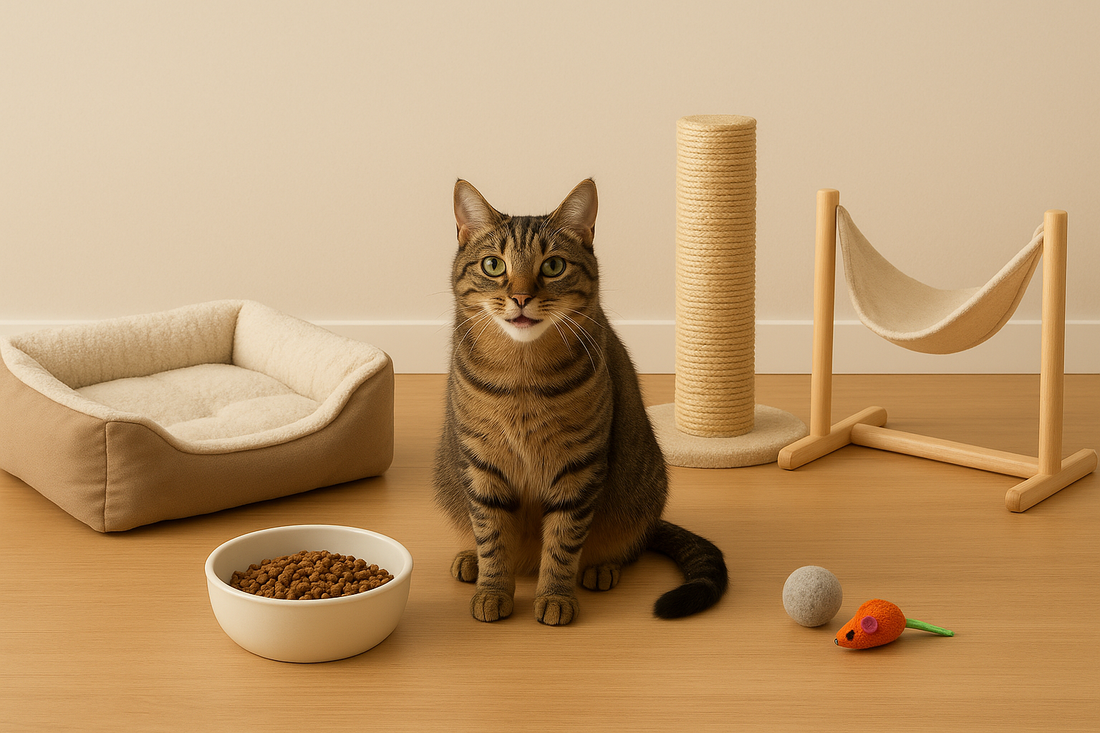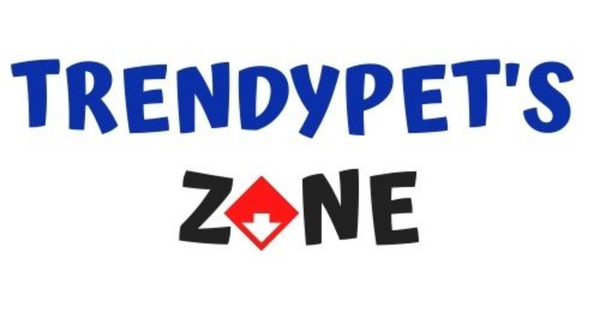
Top 10 Cat Essentials Every Owner Needs
Bringing a cat into your home is exciting — but to keep your feline friend happy, healthy, and comfortable, you’ll need a few must-have essentials. Whether you’re a first-time cat parent or just upgrading your setup, this checklist covers everything you need to set your kitty up for success.
1. 🐾 Litter Box & Quality Litter
A clean litter box is non-negotiable. Choose a box that’s big enough for your cat to turn around in comfortably. Covered boxes reduce mess, but some cats prefer open designs.
Benefits: Prevents accidents, reduces odor, and keeps your cat stress-free.
Tips: Test different litters (clumping, unscented, natural corn or paper) — every cat has a preference. Place the box in a quiet, yet accessible, spot.
Example: An extra-large open litter tray for big breeds, or a modern top-entry box for small spaces.
2. 🧼 Litter Scoop & Disposal System

 Even the best litter needs daily scooping. A sturdy scoop and a sealed bin or litter disposal system make the job easier.
Even the best litter needs daily scooping. A sturdy scoop and a sealed bin or litter disposal system make the job easier.
Benefits: Keeps your home fresh and odor-free, helps cats use the box consistently.
Tips: Scoop at least once a day, fully change litter weekly. Consider eco-friendly disposal bags.
Example: Stainless steel litter scoop + a PetSafe® odor-locking disposal pail.
3. 🍲 Food & Water Bowls
 Food and water bowls are daily essentials. Stainless steel and ceramic are safest, as they resist bacteria better than plastic.
Food and water bowls are daily essentials. Stainless steel and ceramic are safest, as they resist bacteria better than plastic.
Benefits: Prevents whisker fatigue, ensures safe, hygienic meals.
Tips: Use wide, shallow bowls so whiskers don’t touch the sides. Raised bowls help older cats eat more comfortably.
Example: A ceramic whisker-friendly bowl set with a non-slip mat.
4. 🐟 High-Quality Cat Food

 Cats are obligate carnivores, which means they need animal protein to thrive. The right food depends on your cat’s age, lifestyle, and health.
Cats are obligate carnivores, which means they need animal protein to thrive. The right food depends on your cat’s age, lifestyle, and health.
Benefits: Supports strong muscles, a shiny coat, a healthy weight, and overall wellness.
Tips: Consult your vet before changing diets. Wet food helps with hydration; dry kibble can help with dental care.
Example: Grain-free chicken pâté for adults, or specially formulated kitten food for growing cats.
5. 💦 Fresh Water Source
 Cats naturally drink less water than dogs, which makes dehydration a common risk. A cat fountain encourages them to drink more.
Cats naturally drink less water than dogs, which makes dehydration a common risk. A cat fountain encourages them to drink more.
Benefits: Helps prevent urinary tract issues and kidney problems.
Tips: Keep the fountain clean and change filters regularly. Always have a backup water bowl nearby.
Example: A stainless steel cat fountain with a quiet pump.
6. 🛋️ Scratching Posts & Pads

 Scratching is instinctive — it sharpens claws, stretches muscles, and marks territory. Without an outlet, cats may turn to your sofa.
Scratching is instinctive — it sharpens claws, stretches muscles, and marks territory. Without an outlet, cats may turn to your sofa.
Benefits: Protects furniture, keeps cats active and stress-free.
Tips: Place multiple scratching surfaces around your home — vertical posts, cardboard pads, sisal mats. Sprinkle catnip to encourage use.
Example: Tall sisal scratching tower + horizontal cardboard scratcher.
7. 🏡 Cat Bed or Cozy Spot
 Cats sleep up to 16 hours a day! Providing a soft, safe place to rest makes them feel secure.
Cats sleep up to 16 hours a day! Providing a soft, safe place to rest makes them feel secure.
Benefits: Promotes comfort, reduces stress, and helps cats claim their own territory.
Tips: Try different textures — plush beds, donut beds, or window hammocks. Wash regularly to reduce fur build-up.
Example: Orthopedic foam cat bed for seniors, or a sunny window perch for curious cats.
8. 🎾 Toys for Play & Exercise

 Playtime keeps cats mentally sharp and physically active. A mix of solo and interactive toys is ideal.
Playtime keeps cats mentally sharp and physically active. A mix of solo and interactive toys is ideal.
Benefits: Prevents boredom, encourages exercise, and strengthens the bond between cat and owner.
Tips: Rotate toys weekly to keep them exciting. Puzzle feeders double as play + mealtime stimulation.
Example: Feather wand toys, crinkle balls, treat-dispensing puzzle feeders.
9. ✂️ Grooming Tools
 Even cats that groom themselves need a little help. Regular brushing reduces shedding, prevents mats, and keeps your cat’s coat shiny.
Even cats that groom themselves need a little help. Regular brushing reduces shedding, prevents mats, and keeps your cat’s coat shiny.
Benefits: Less hair around the house, fewer hairballs, healthier skin and fur.
Tips: Use a slicker brush for long-haired cats, a grooming mitt for short-haired cats. Don’t forget nail clippers and pet wipes for quick cleanups.
Example: Furminator® deshedding tool + safety nail clippers.
10. 🏥 Carrier & First-Aid Basics

 A carrier isn’t just for the vet — it’s essential for emergencies and safe travel. Pair it with a small first-aid kit for peace of mind.
A carrier isn’t just for the vet — it’s essential for emergencies and safe travel. Pair it with a small first-aid kit for peace of mind.
Benefits: Keeps your cat safe during trips, ensures you’re prepared for minor injuries.
Tips: Leave the carrier open at home so your cat gets used to it. Add a soft blanket for comfort.
Example: Hard-shell airline-approved carrier + a compact cat first-aid kit.
✅ Bonus: Love, Patience & Vet Care
 Beyond supplies, the real essentials are daily love, patience, and routine veterinary care. Regular checkups help catch health issues early, and affection builds trust with your cat.
Beyond supplies, the real essentials are daily love, patience, and routine veterinary care. Regular checkups help catch health issues early, and affection builds trust with your cat.
Tip: Schedule yearly wellness exams, and don’t underestimate the power of play and cuddles.
👉 With these essentials in place, you’ll create a happy, healthy, and stress-free environment for your cat — and enjoy all the joy that comes with being a cat parent.
Tags: Cat essentials, New cat owner guide, Must-have cat supplies, Cat care checklist, Senior cat comfort, Cat beds and perches, Cat toys and scratching posts, Cat food and bowls, Best cat accessories, Cat grooming tools, Litter box essentials, Cat carrier and travel tips, best litter box for cats, cat water fountain benefits, safe cat toys for indoor cats, grooming tools for cats, best carrier for vet visits

